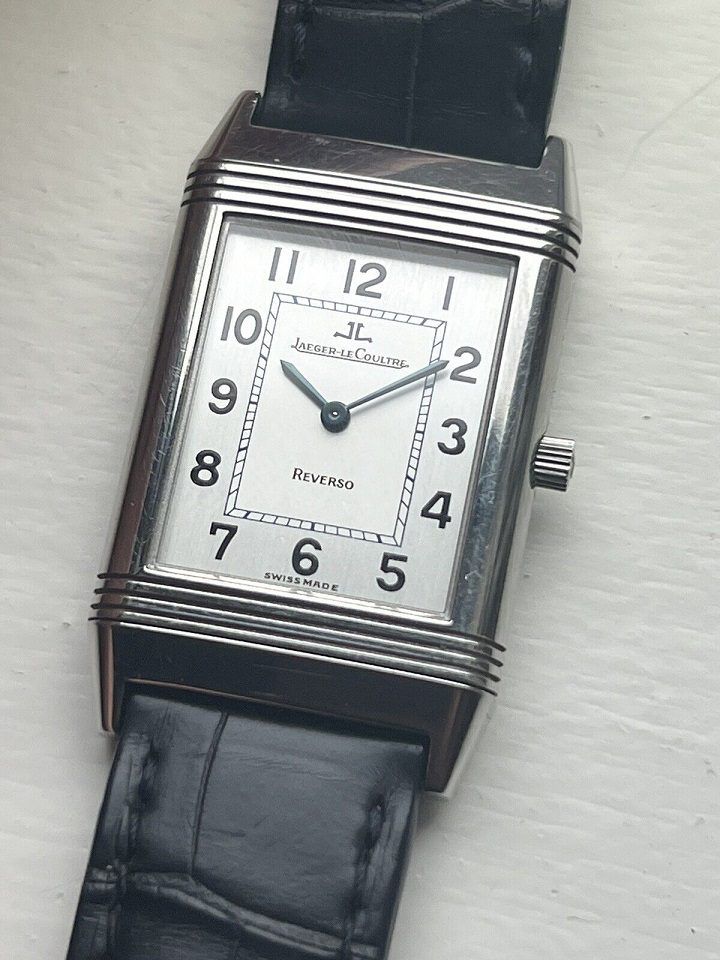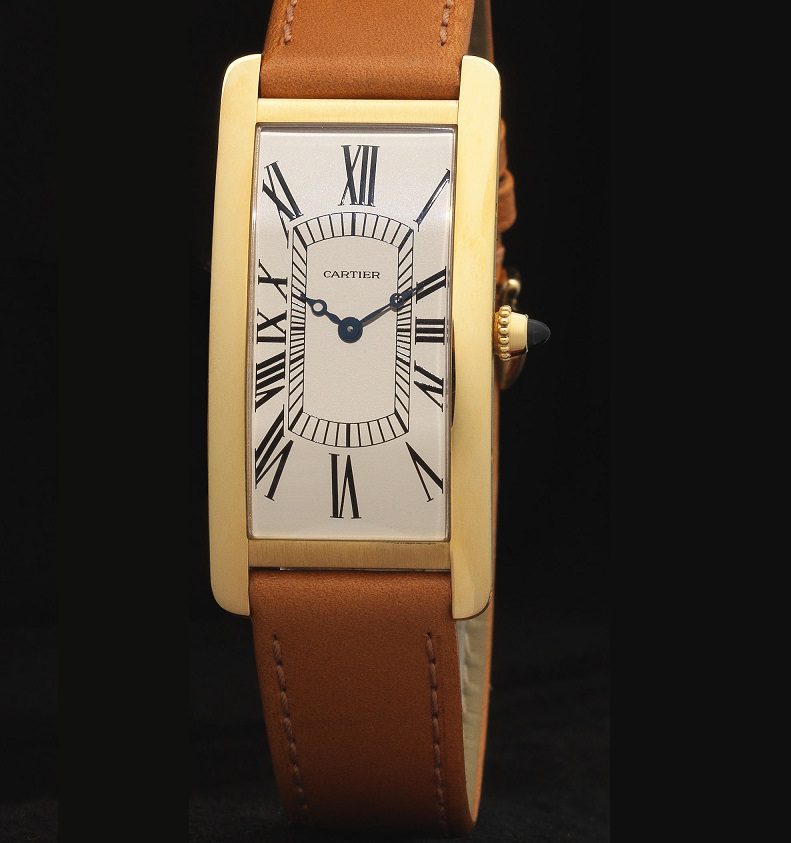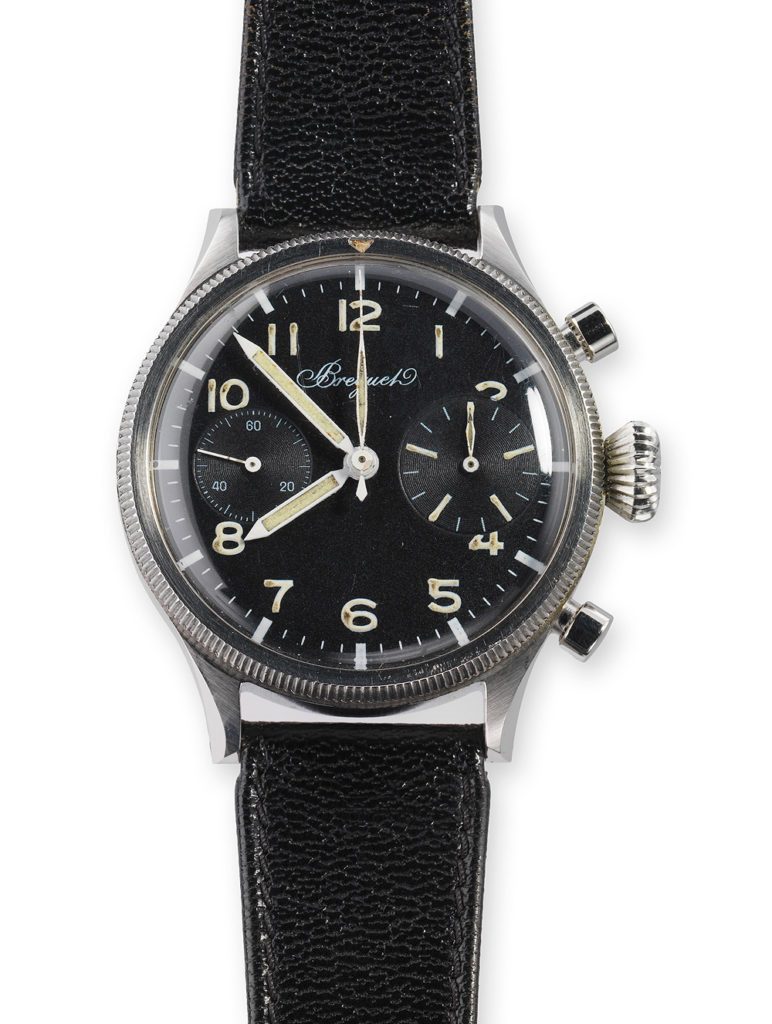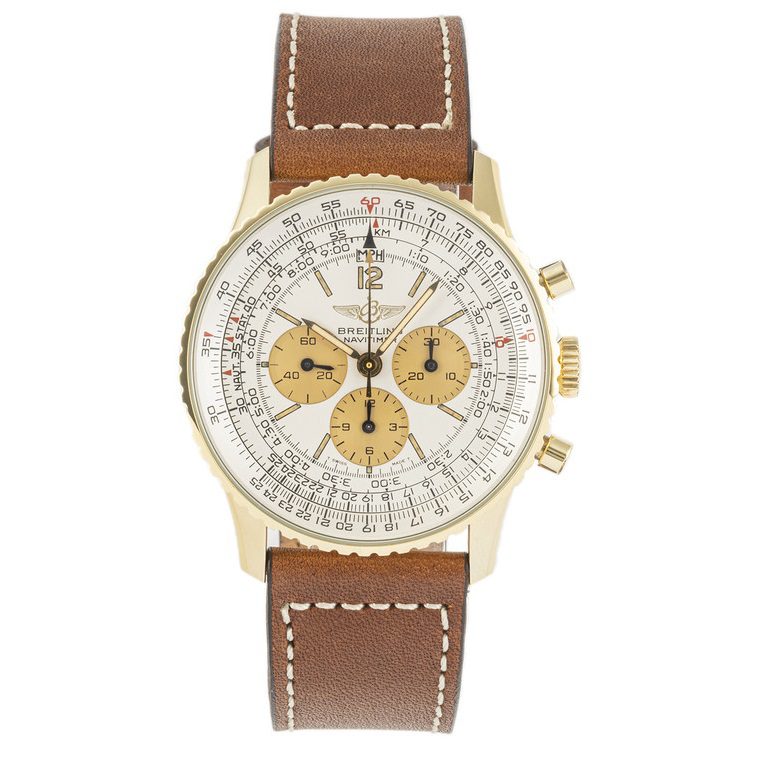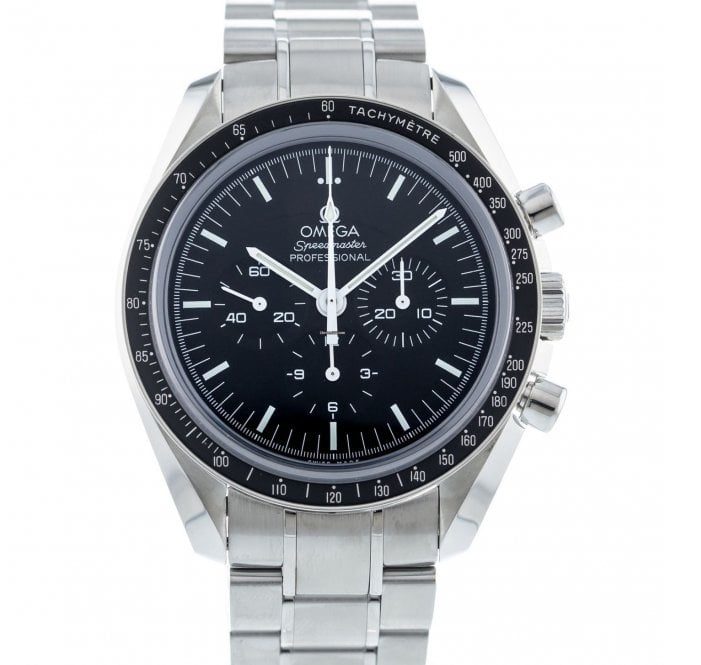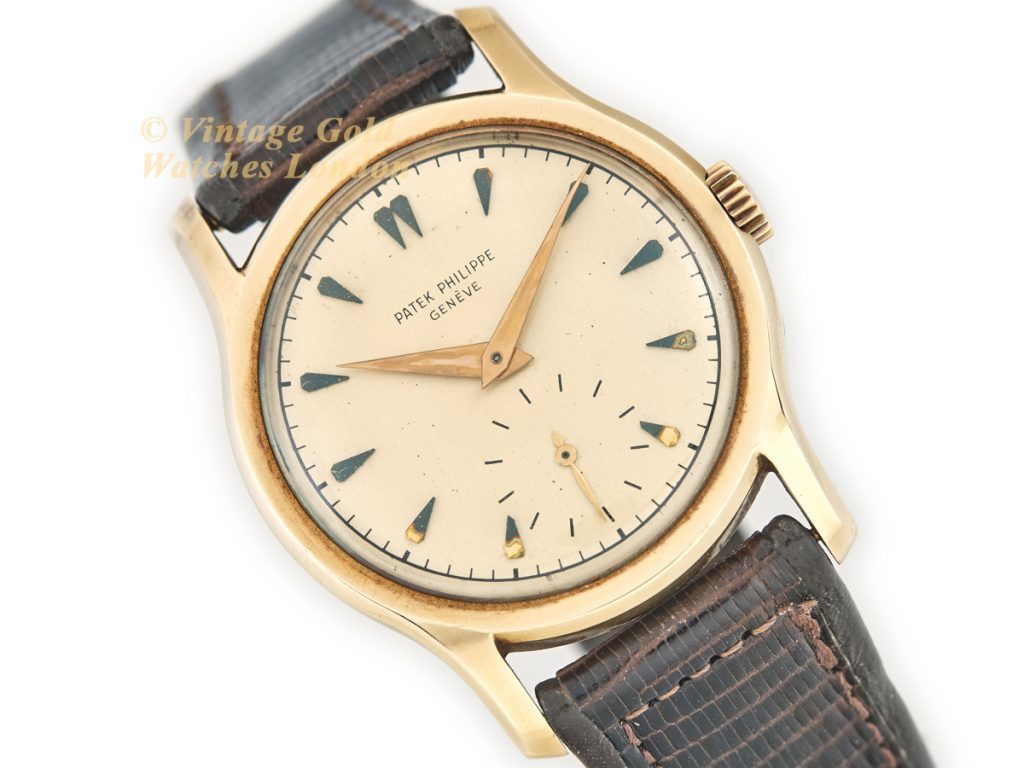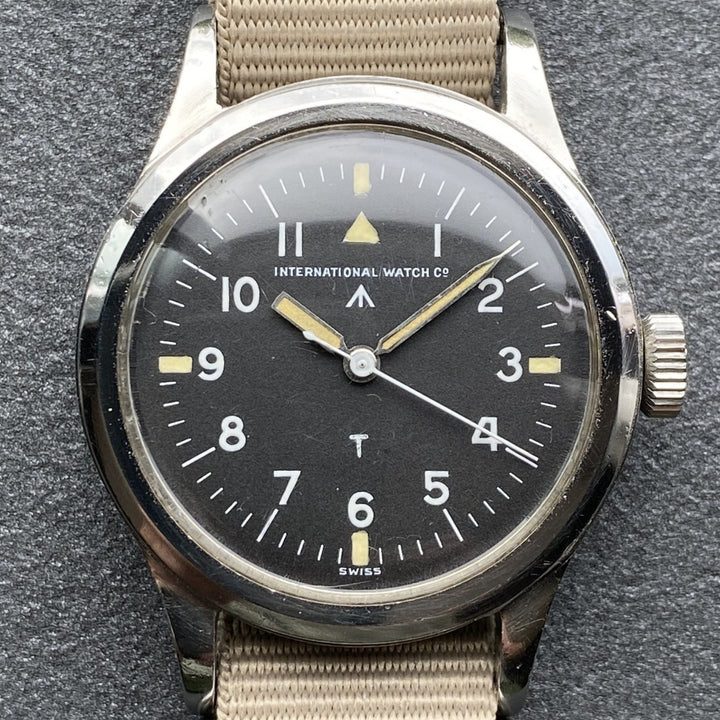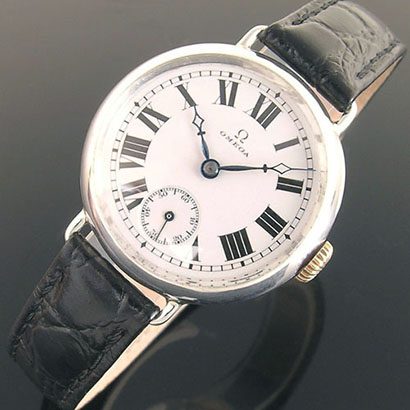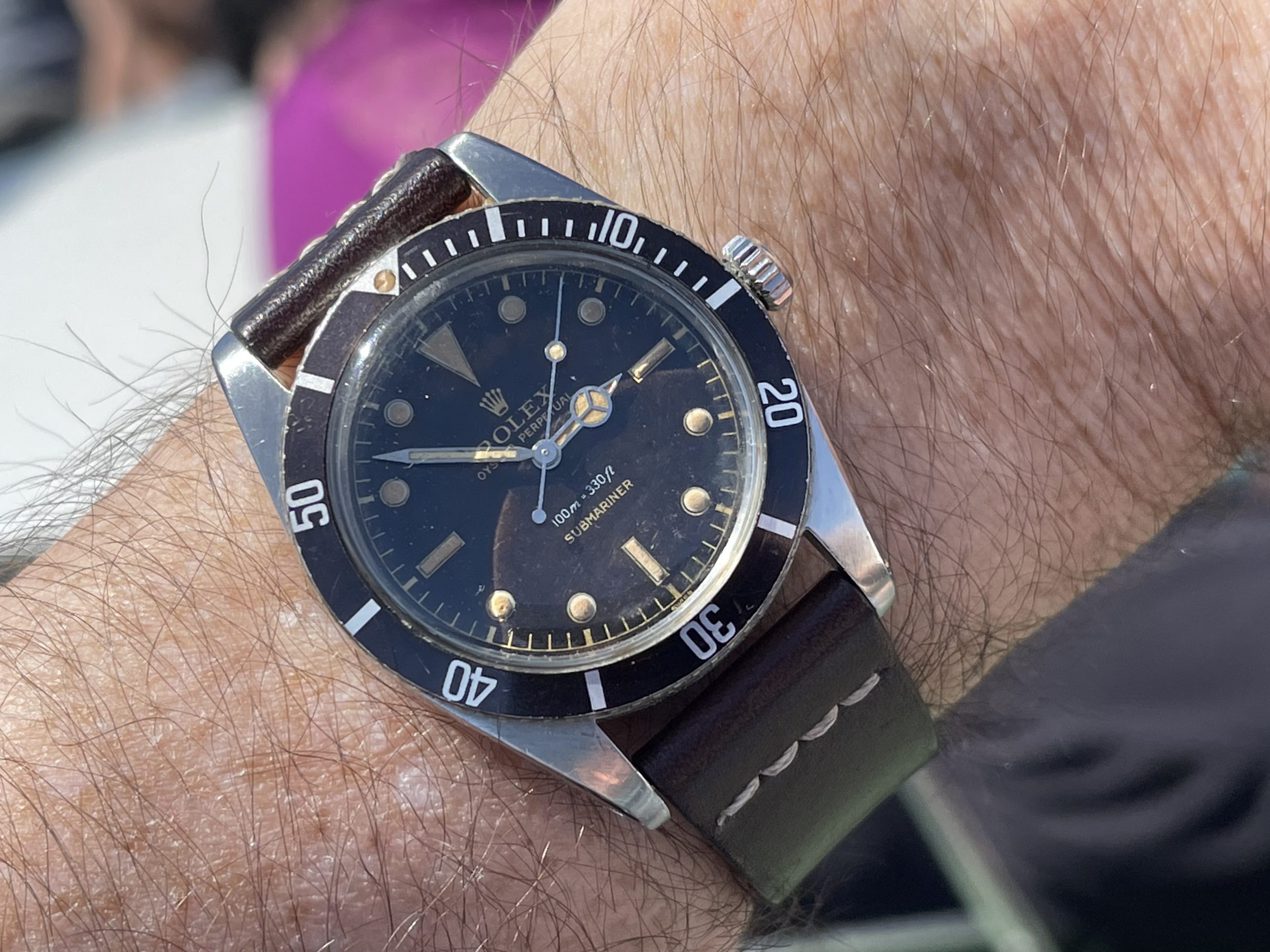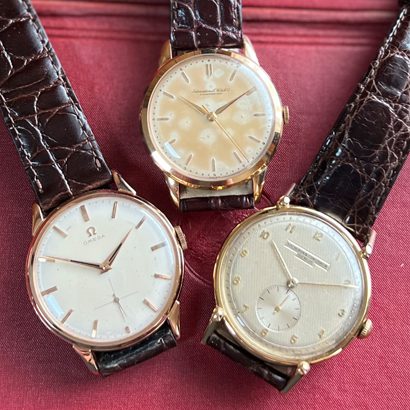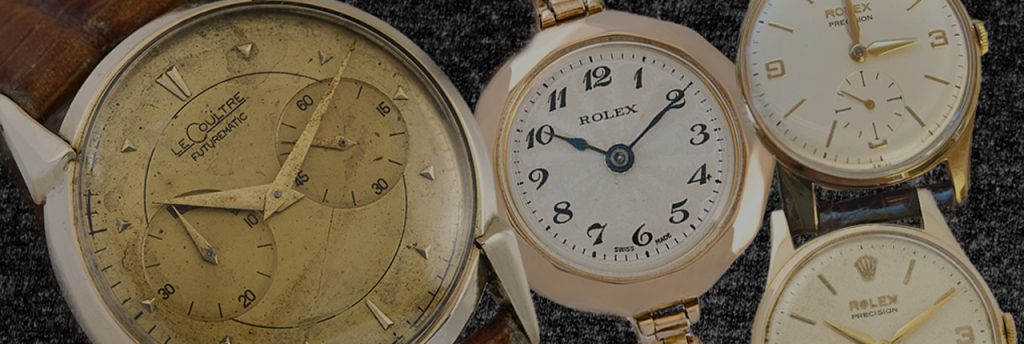
Our Favourite Vintage Hand-Wound Watches
Many vintage watch collectors are blithely unaware or indifferent to the fact that in days of old watches had to be hand-wound. That’s right, vintage hand-wound watches require you to adopt a morning ritual of winding your watch before you wear it.
This process involves turning the crown. This transfers energy to the mainspring, and sets the gears and escapement in motion, creating the lovely ticking sound that measures time.
Just as you know when it’s time to change gear in a manual vehicle, after a few days of manual watch winding you will know instinctively when you have ratcheted enough power in the mainspring of the manual-wind movement to last the entire day.
The next thing you know, you positively look forward to winding your watch each day. It becomes a ritual. When you reach this stage, you have fallen for the charm and old-school cool of the vintage hand-wound watch.
It will come as something of an eye-opener to some that manually-wound watches are still being produced. There is certainly a market for them among collectors, and they’re not all tweedy jacketed fuddy-duddies.
But why bother with a manual-wound watch when an automatic watch or a quartz watch does all the work for you?
The Allure of Vintage Hand-Wound Watches
One of the pleasures of owning a mechanical vintage hand-wound watch is seeing the inner workings. If you are fascinated by the micro-mechanics in a mechanical watch, a hand-wound watch with a transparent case back allows you to see more of the movement.
Within many of these fine watches lies legendary hand-wound movements such as the Patek Philippe Caliber 89 and the A. Lange & Söhne L901.0. These movements have left an indelible mark on the watch industry. They have meticulously crafted calibres which represent the pinnacle of horological innovation and tradition and such movements continue to shape and inform the art of watchmaking.
Vintage hand-wound watches come with other advantages too. Because there is no rotor required to automatically wind the mainspring, the watch case can be slimmer and more elegant, which makes a vintage hand-wound watch perfect for more dressy occasions.
Mechanically, hand-wound watches comprise a symphony of gears, springs, and levers meticulously assembled by skilled artisans. Collectors are drawn to their elegance and the craftsmanship required to create and maintain them.
In a world increasingly dominated by automation, vintage hand-wound watches still stand as a testament to human skill and dedication. Their rhythmic ticking and partial reliance on human interaction become a part of the joy of watch collecting. These timepieces not only measure time but also invite wearers to become a part of its passage, creating a bridge between the past and the present.
If you’re already itching to discover the secret pleasure of the manually wound watch, check out some of our vintage manual-wind watches that we currently have in stock.
Why Choose a Vintage Hand-Wound Watch?
Choosing a vintage hand-wound watch is like passing through a secret portal to timekeeping’s earliest origins. By embracing the ritual of daily hand-winding, it’s possible to revel in the intricate craftsmanship and savour the elegance of a slimmer, more elegant profile.
We’re not for one moment suggesting you abandon the convenience of quartz or an automatic timepiece, especially for more heavy-duty tool watches, but you may like to opt for a manual-wound watch to experience hands-on engagement with horology. It’s a chance to appreciate the intricate mechanics as you wind it daily, enjoy its slimmer design, its elegance, and the deeper connection to the centuries-old watchmaking tradition.
Our Favourite Vintage Hand-Wound Watches
We invited Vintage Gold Watches owner and vintage watch specialist Alan Wood to comment on his favourite vintage hand-wound watches. This is a man who has cast his nuanced eye upon more manual-wind vintage watches than you’ve had boiled eggs. We asked him to comment on each of his chosen watches in turn.
Our Favourite Vintage Hand-Wound Dress Watches
Manual-wind watches epitomise elegance through their intricate designs and slim profiles. Each winding ritual engages with horological artistry, bringing the timepiece to life. These watches unite form and function, a testament to craftsmanship, evoking a timeless connection between the wearer and the intricate mechanical marvel.
Omega Cal.30 T2 PC 18ct Pink Gold 1946
“This is an exquisite 1946 Cal.30 T2 PC 18ct pink gold dress watch, meticulously restored. The standout feature is its exceptional movement – the renowned Cal.30 T2, a chronometer-grade precision movement with historic triumphs in accuracy trials. Noteworthy attributes encompass the elegantly classic 1940s dial and a splendid 35mm pink gold case, combining to create a truly remarkable timepiece.” £3,300.
“A highly impressive piece, not only for its wonderfully elegant dial but also for being oversized at 37mm in diameter. Not to mention, of course, the amazingly good condition of this watch, but this is just what lies on the surface. Underneath we find a truly iconic movement, the Cal.89 which has certainly stood the test of time, remaining in production for both civilian and military use for over 40 years!” £3,500.
Jaeger-LeCoultre Cal.K800/C 9ct 1960
“A meticulously restored 1960 Jaeger-LeCoultre gentleman’s hand-wound dress watch in 9ct yellow gold. The dial exudes 1960s elegance with its clean and simple design. The revered Calibre K800/C hand-wound movement boasts impeccable precision and reliability, ranking among JLC’s finest of that era, rivalling Swiss counterparts. Its premium waterproof case enhances practicality, rendering it suitable for both formal occasions and daily wear.” £2,950.
Zenith Cal.126-6 18ct Pink Gold 36mm Oversize 1956
“Established in 1865, Zenith stands among the oldest watchmakers, distinguished by its continuous in-house movement production—a rarity. A storied legacy of technical triumphs includes a 1929 victory at Kew Observatory, where a Zenith wristwatch clinched accolades with a remarkable sub-0.6-second daily accuracy.
Through the late 1940s and 1950s, Zenith reigned supreme in crafting both technically advanced and commercially successful chronograph wristwatches. Noteworthy is their contribution to Rolex’s Daytona Chronograph. This watch boasts a rare 18ct pink gold case, a generous 36mm diameter, and an impeccably preserved movement. An original Zenith-signed gold-plated buckle further enhances its appeal.” £2,350.
Rolex Precision Cal.1210 9ct 1965
“Showcasing here a captivating 1965 Rolex Precision — a pristine testament to timeless elegance. This vintage 9ct yellow gold gentleman’s dress watch boasts an untouched, fully original state, highlighted by a silver-white dial adorned with ‘3 – 6 – 9 – 12’ Arabic numerals. Meticulously preserved, it underwent delicate restoration, reviving its near-new splendour. Encased in 9ct yellow gold, the 34mm diameter case, impeccably maintained, reflects a larger dimension for its era, exemplifying superior craftsmanship.” £3,950.
Our Favourite Hand-Wound Pilot Watches
Vintage hand-wound pilot watches enjoy a storied history dating back to the early 20th century. These hardy timepieces were born from the need for accurate, reliable instruments for aviators navigating the skies during both World Wars.
Crafted with legibility as a top priority, large and distinct Arabic numerals and luminescent hands ensured quick reading even in low-light cockpit conditions. Oversized crowns enabled easy adjustment of the watch while wearing thick leather mitts in the freezing cockpit.
Functionality was paramount. Robust cases and crystals shielded movements from harsh environments, the watches were manual wind in order to sidestep reliance on automatic systems that might fail during flight.
Today, vintage hand-wound pilot watches continue to captivate aviators and collectors alike. Their enduring appeal lies in their historical significance, timeless design, and mechanical craftsmanship.
Breguet Type XX
Notable models include the Breguet Type XX and the classic IWC Mark series, such as the Mark XI. These watches retain their original charm while adapting to modern preferences. Designed in the 1950s for the French naval air army, the Type XX exudes a military cool, combining legibility with a flyback chronograph function.
IWC Mark XI
In 1948, the debut of the Mark XI transpired through a collaboration between International Watch Company (IWC) and Jaeger-LeCoultre (JLC), crafting watches aligned with British Ministry of Defence (MoD) standards.
These manual timekeepers prioritised functionality, culminating in enduring classics of horology. The IWC Mark XI, with its simplicity and durability, was a navigational tool for RAF pilots. These timepieces symbolise the enduring bond between horology and aviation, each telling a unique story of exploration and precision.
Our Favourite Hand-Wound Diver’s Watches
Early hand-wound diver’s watches were pioneers in underwater exploration, revolutionising marine endeavours. They became popular post-World War II in the early 1950s. They had robust water-resistant cases and secure seals, evolving into vital tools for divers.
Enhanced readability was assured using bold luminous markers, while hands ensured legibility even in murky waters, enabling safety and precision. Their enduring legacy resonates in today’s modern dive watches, showcasing a fusion of heritage, innovation, and a deep-rooted connection to the mysteries of the sea.
Vulcain Cricket Nautical
The Vulcain Cricket Nautical diver, a Swiss marvel, emerged in 1961. An innovative dive watch, it boasted a mechanical alarm for underwater safety, cementing its legacy as a functional and pioneering timepiece.
Officine Panerai Luminor Marina
The Officine Panerai Luminor Marina manual-wound diver is a Swiss masterpiece. Combining heritage with modernity, it features exceptional water resistance, legibility, and a unique crown-protecting bridge, embodying timeless elegance and functionality.
Omega Seamaster Ploprof
The Omega Seamaster Ploprof gained renown for its unconventional appearance and exceptional water resistance. Its striking design combined functionality with style, making a statement both underwater and on land.
Our Favourite Vintage Manual-Wind Chronographs
Hand-wound chronographs, celebrated for their precision and versatility, excel across diverse domains. From the adrenaline-pumping arena of sports to the exacting demands of aviation and beyond, these timepieces prove indispensable. Their manual winding mechanisms enhance precision, while the chronograph function empowers users to measure elapsed time with precision.
Breitling Navitimer Chronograph
The Breitling Navitimer Chronograph, introduced in 1952, transcends time as an aviation icon. With its distinctive slide rule bezel, it became a vital cockpit tool, embodying precision and aeronautical prowess.
This fabled beauty became renowned as the “Moonwatch,” and earned its place in history by accompanying astronauts to the lunar surface. It remains a hot collectors’ favourite to this day and new editions are snapped up fast, despite the fact no one has landed on the moon since the early 70s.
TAG Heuer Carrera
Motor racing enthusiasts rely on hand-wound chronographs which offer exceptional timing precision for track events. Launched in 1963, the TAG Heuer Carrera embodies racing heritage. Named after the Carrera Panamericana, it revolutionised chronograph design with its clean, legible dial and sporty aesthetics, becoming an enduring symbol of speed and style.
Our Favourite Enamel and Art Deco Vintage Watches
Vintage hand-wound watches adorned with enamel dials and Art Deco designs epitomise horological elegance. These masterpieces blend meticulous craftsmanship and vibrant enamelwork, evoking the beauty of the Art Deco era.
Enamel dial and Art Deco timepieces stand as fine examples of exquisite craftsmanship and artistic expression. The fusion of enamel and Art Deco creates enduring symbols of timeless beauty and sophistication.
Art Deco’s geometric sculpting inspires designs that harmonise form and function, showcasing bold lines, symmetry, and intricate detailing. These timepieces embody wearable art that captures the spirit of an era.
Patek Philippe Calatrava Ref. 2450
Adorned with a honey dial, this Art Deco-inspired masterpiece showcases wonderful craftsmanship. Its clean lines, exquisite detailing, and enamel work exemplify timeless elegance.
Cartier Tank Cintrée
A quintessential Art Deco icon, the Tank Cintrée boasts a delicate enamel dial. Its elongated, curved case and minimalist design evoke the era’s aesthetics, blending mechanical precision with artistic allure. The famous tank design was inspired by the shape of World War 1 tanks.
Jaeger Le-Coultre Reverso
Introduced in 1931, the Reverso was specifically designed to protect the watch from the rigours of playing Polo by reversing it on itself. Its understated but supremely elegant Art Deco contours are groundbreaking and its reversible casing has elevated it to one of the world’s most identifiable watches. The Reverso has 50 different calibres, including even quartz, but more than a few of them are manual-winding.
Long Live The Manual-Wound Watch
We can happily report that within this increasingly automated world, with the younger generation eagerly embracing the smartwatch, the hand-wound watch still shows no signs of disappearing any time soon.
The technical prowess of the hand-wound movement, once under serious threat from the quartz crisis of the 70s and 80s, has not only endured but prospered. Why, when even the manual drive car is giving way to the automatic electric? Because its charm, reliability, longevity and exquisite finishing continue to set new standards and challenges.
If you have any questions about manual-wind watches or you would like to see some of the models we have highlighted in this guide, get in touch, we will be happy to help.
If you would like to receive regular updates of the latest additions to our large stock and keep up to date with industry news, sign up for our informative weekly newsletter.
